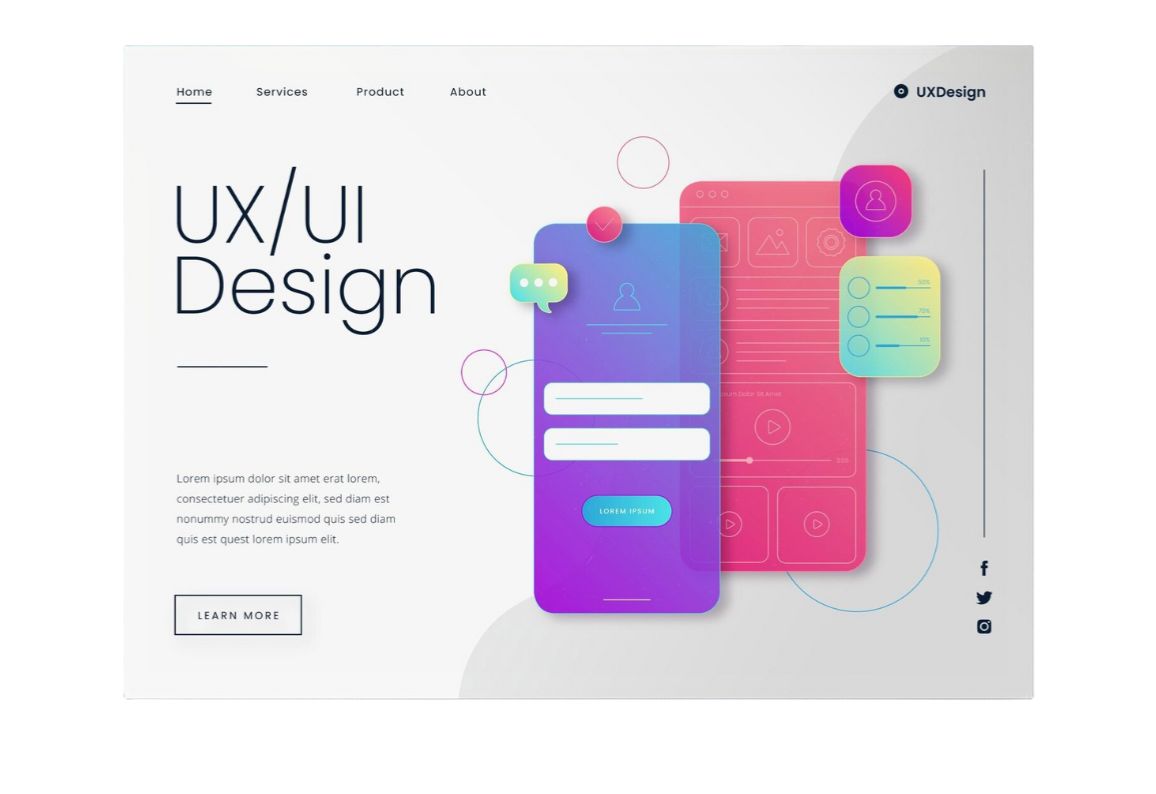As the world becomes increasingly digital, from websites and mobile applications to other digital platforms transforming how we interact, the role of User Interface (UI) and User Experience (UX) in digital products has become essentia
The Art and Science of UI/UX Design: Creating Engaging Digital Experience
Understanding UI and UX Design
What is UI Design?
User Interface (UI) design focuses on the visual aspects of a digital product. It includes designing screens, buttons, icons, typography, and other interactive components that enable users to interact with a product. In essence, UI is about how things look and feel.
Key principles of UI design include:
Consistency: Uniformity in design elements like colors, typography, and icons across the platform.
Clarity: Ensuring the design clearly communicates its purpose.
Responsiveness: Adapting designs to work on various devices and screen sizes.
Accessibility: Creating designs usable by people with diverse abilities, including visual, auditory, and physical impairments.
What is UX Design?
User Experience (UX) design focuses on enhancing user satisfaction by improving usability, accessibility, and the overall experience of a product. Unlike UI, which emphasizes aesthetics, UX prioritizes the user’s overall journey.
Key principles of UX design include:
User-Centric Approach: Understanding and prioritizing user needs, behaviors, and pain points.
Information Architecture: Structuring and organizing content intuitively and accessibly.
Interactivity: Designing smooth, engaging interactions that lead users to their desired goals.
Feedback: Providing clear responses to user actions, such as animations or error messages.
UI and UX work in harmony. UI makes the product visually appealing, while UX ensures it meets user expectations and delivers value.
Why UI/UX Design Matters
Engaging Users
A well-designed interface and user experience attract and retain users. A messy interface or confusing navigation may frustrate users, while a clean, intuitive design encourages them to explore further.
Building Brand Loyalty
Good UI/UX design enhances a brand’s reputation. High usability and enjoyable experiences foster customer loyalty and repeat engagement.
Accessibility by Design
Modern UI/UX emphasizes inclusivity, creating products accessible to people with varying abilities, devices, and even slow internet connections.
Conversion Rates
Effective UI/UX design directly impacts business success. Streamlined processes such as signing up, purchasing, or contacting support can boost conversions and revenue.
UI/UX Design Essentials
Research and Analysis
Understanding the target audience through surveys, interviews, and user testing is critical. Competitor analysis can also provide valuable insights.
Wireframing and Prototyping
Wireframes outline the structure of a design, acting as blueprints. Prototypes are interactive versions of the design, enabling feedback and testing before development.
Visual Design
This phase involves selecting color schemes, typography, and images aligned with the brand identity. Tools like Adobe XD, Figma, and Sketch are commonly used.
Interaction Design
Designing intuitive user interactions, from button animations to page transitions, is crucial for a natural and engaging experience.
Usability Testing
Testing with real users ensures the product meets expectations before launch. Feedback during this phase helps polish the final product.
Challenges in UI/UX Design
Aesthetics vs. Functionality
Balancing visually appealing designs with functionality and ease of use is a constant challenge.
Staying Updated with Trends
The digital landscape evolves rapidly. Designers must stay informed about emerging trends and technologies to remain competitive.
Managing Stakeholder Expectations
Aligning user needs with business goals and stakeholder preferences requires effective communication and collaboration.
Catering to Diverse User Needs
Designing for a global audience demands attention to cultural differences and varying levels of tech-savviness.
Future Trends in UI/UX Design
AI-Powered Design
Artificial Intelligence is transforming UI/UX, enabling personalized experiences and automating design processes with tools like ChatGPT.
Voice and Gesture Interfaces
The rise of smart devices and wearables requires designers to adapt to new interaction paradigms.
Augmented and Virtual Reality
AR and VR are revolutionizing industries like gaming, retail, and education, requiring innovative design approaches.
Dark Mode and Customization
Dark mode is becoming standard in apps and websites, while customizable experiences cater to diverse user preferences.
Sustainable Design
Eco-conscious users demand sustainable practices. Designers can optimize for energy efficiency and embrace digital minimalism.
Conclusion
UI/UX design is both an art and a science, blending creativity, technical expertise, and a deep understanding of user behavior. In today’s competitive digital landscape, prioritizing good design is essential. By focusing on user needs and embracing innovation, designers can create experiences that not only meet expectations but also delight and inspire. Whether you’re a business owner, developer, or aspiring designer, mastering UI/UX design principles can lead to impactful digital products.







